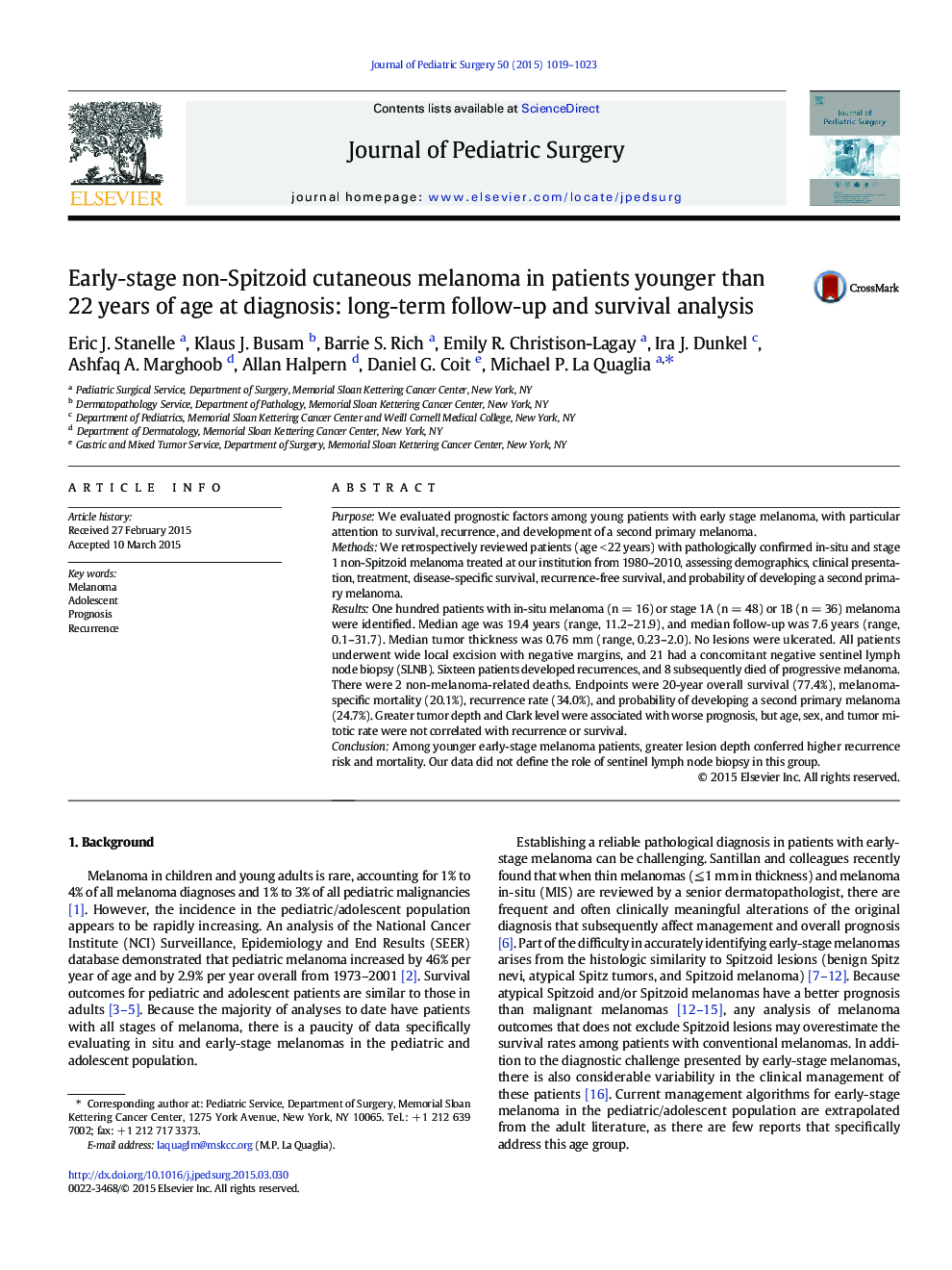| Article ID | Journal | Published Year | Pages | File Type |
|---|---|---|---|---|
| 4155058 | Journal of Pediatric Surgery | 2015 | 5 Pages |
PurposeWe evaluated prognostic factors among young patients with early stage melanoma, with particular attention to survival, recurrence, and development of a second primary melanoma.MethodsWe retrospectively reviewed patients (age < 22 years) with pathologically confirmed in-situ and stage 1 non-Spitzoid melanoma treated at our institution from 1980–2010, assessing demographics, clinical presentation, treatment, disease-specific survival, recurrence-free survival, and probability of developing a second primary melanoma.ResultsOne hundred patients with in-situ melanoma (n = 16) or stage 1A (n = 48) or 1B (n = 36) melanoma were identified. Median age was 19.4 years (range, 11.2–21.9), and median follow-up was 7.6 years (range, 0.1–31.7). Median tumor thickness was 0.76 mm (range, 0.23–2.0). No lesions were ulcerated. All patients underwent wide local excision with negative margins, and 21 had a concomitant negative sentinel lymph node biopsy (SLNB). Sixteen patients developed recurrences, and 8 subsequently died of progressive melanoma. There were 2 non-melanoma-related deaths. Endpoints were 20-year overall survival (77.4%), melanoma-specific mortality (20.1%), recurrence rate (34.0%), and probability of developing a second primary melanoma (24.7%). Greater tumor depth and Clark level were associated with worse prognosis, but age, sex, and tumor mitotic rate were not correlated with recurrence or survival.ConclusionAmong younger early-stage melanoma patients, greater lesion depth conferred higher recurrence risk and mortality. Our data did not define the role of sentinel lymph node biopsy in this group.
